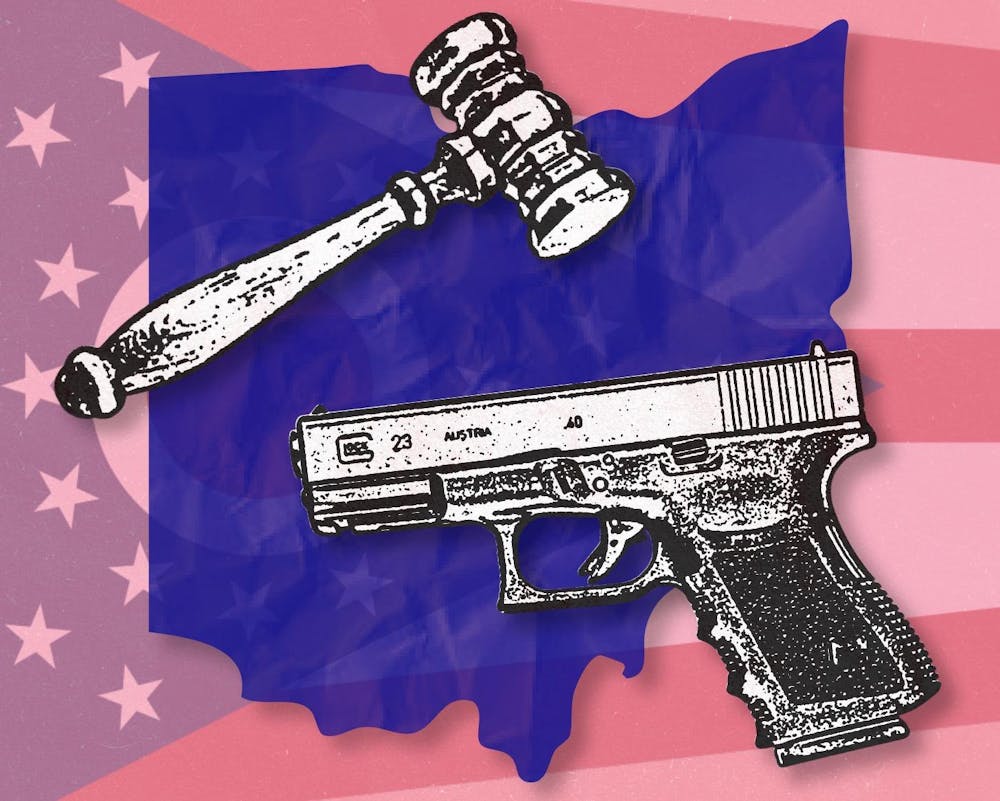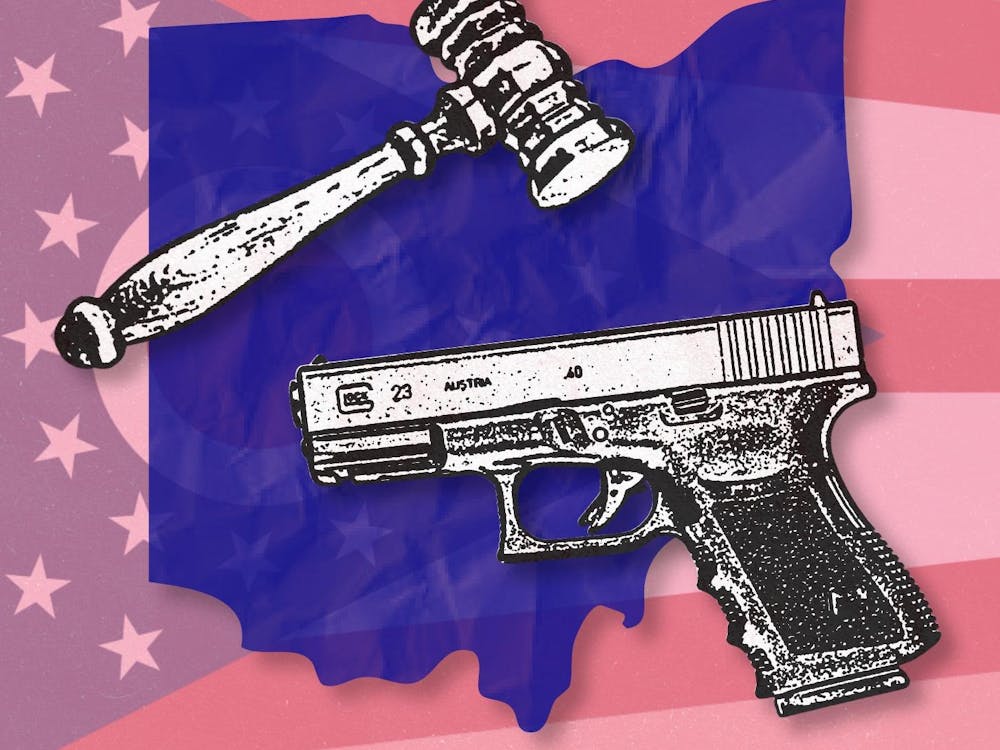This column, as well as four others, was written by a student in Matthew Arbuckle’s Federalism and Intergovernmental Relations (POL 364) class, based on the question of whether cities in Ohio should be able to enact gun laws in their own jurisdiction.
Gun violence in Ohio is not just an abstract policy debate, but a lived reality for too many communities. Every week, there is another headline or report about a shooting in Cleveland, Columbus or Cincinnati.
Lives are shattered, families grieve and yet, our state leaders continue to bind the hands of local governments who are attempting to protect their residents. Because of this, Ohio’s cities should have the right to enact their own gun control laws. These communities understand their local challenges far better than the General Assembly in Columbus, which is sometimes far removed from the neighborhoods they serve that are facing the highest rates of violent crime. It is time to give cities the freedom to act.
Ohio’s Constitution gives cities the power of “local self-government” under Article XVIII, Section 3, meaning municipalities should have authority over issues like public safety. However, state lawmakers have repeatedly blocked that right. Ohio Revised Code 9.68 prevents cities from passing any gun law stricter than state law, making gun regulation a “state-wide concern.” But if public safety is not local, what is?
According to the Johns Hopkins Center for Gun Violence Solutions, Ohio recorded 690 firearm homicides in 2023, the vast majority occurring in urban counties like Cuyahoga, Franklin and Hamilton. According to an article by Ohio Capital Journal, in Cleveland alone, some neighborhoods experience homicide rates as high as 57 deaths per 100,000 residents, compared to less than 15 per 100,000 in other parts of the city. By denying cities the right to respond to their own circumstances, the state is not promoting fairness; it is imposing uniform inaction.
In 2010, the Ohio Supreme Court sided with the state in Cleveland v. State, upholding the preemption law. The court ruled that state-level uniformity was more important than local variation. Since then, Ohio has doubled down. In 2019, House Bill 228 expanded preemption even further, giving gun-rights groups more legal tools to sue cities that try to regulate firearms.
But local leaders have not given up the fight. Columbus tried again in 2023, banning magazines that have over 30 rounds and requiring safe gun storage for residents. The city argued that it has a moral duty to respond to the crisis of gun violence. The State of Ohio sued to stop it. That same year, a judge in Hamilton County sided with Cincinnati, temporarily allowing the city to enforce its own gun restrictions, recognizing that local governments have “the right to protect their citizens from harm,” according to Hamilton County Judge Jennifer Branch.
Gun ownership is already protected under both the U.S. and Ohio Constitutions, but rights come with great responsibilities for gun owners. When a community faces daily threats of violence, it should be able to decide how best to reduce those risks. We trust cities to make decisions about policing, zoning and emergency management, and firearm safety should be parallel among those listed.
Gun control does not have to mean gun bans. It can mean requiring safe storage, restricting high-capacity magazines or setting an age limit for purchase. These are reasonable measures designed to protect people from themselves and each other. I’ve also considered the human side of this issue – many shootings are not premeditated, but are impulsive acts of anger, fear or despair. When guns are too accessible, those moments become deadly. Stricter local laws could help prevent suicides by gunfire, domestic violence incidents and accidents that take innocent lives.
The argument for uniformity is about control and the state government deciding that cities do not know what is best for their own residents. This exemplifies principles opposite to democracy. The Ohio Constitution’s home rule clause was written to empower cities, not silence them. When state leaders override local governments, they’re not defending liberty; they’re defending their own political comfort.
Preemption laws should not be shields for inaction. If Cleveland wants to address gun violence differently from rural Ohio, it should have the right to do so. Let us all stop pretending that the “one-size-fits-all” approach is working. People are dying while our leaders debate the semantics of what gun control should look like.
If we care about protecting Ohioans, we must trust our cities to take the lead. Gun violence is a public health crisis, and like any other crisis, the best solutions come from those closest to the problem. Ohio’s cities are ready to take responsibility for their own safety. The question is whether the state will finally let them.
Enjoy what you're reading?
Signup for our newsletter
Kayla Williams is a junior majoring in public administration, with minors in marketing and history. She is the vice president of community relations for Tri Delta sorority and the president of CHAARG, an all-women fitness organization. She is also a student visit coordinator for Miami’s Office of Admission.



